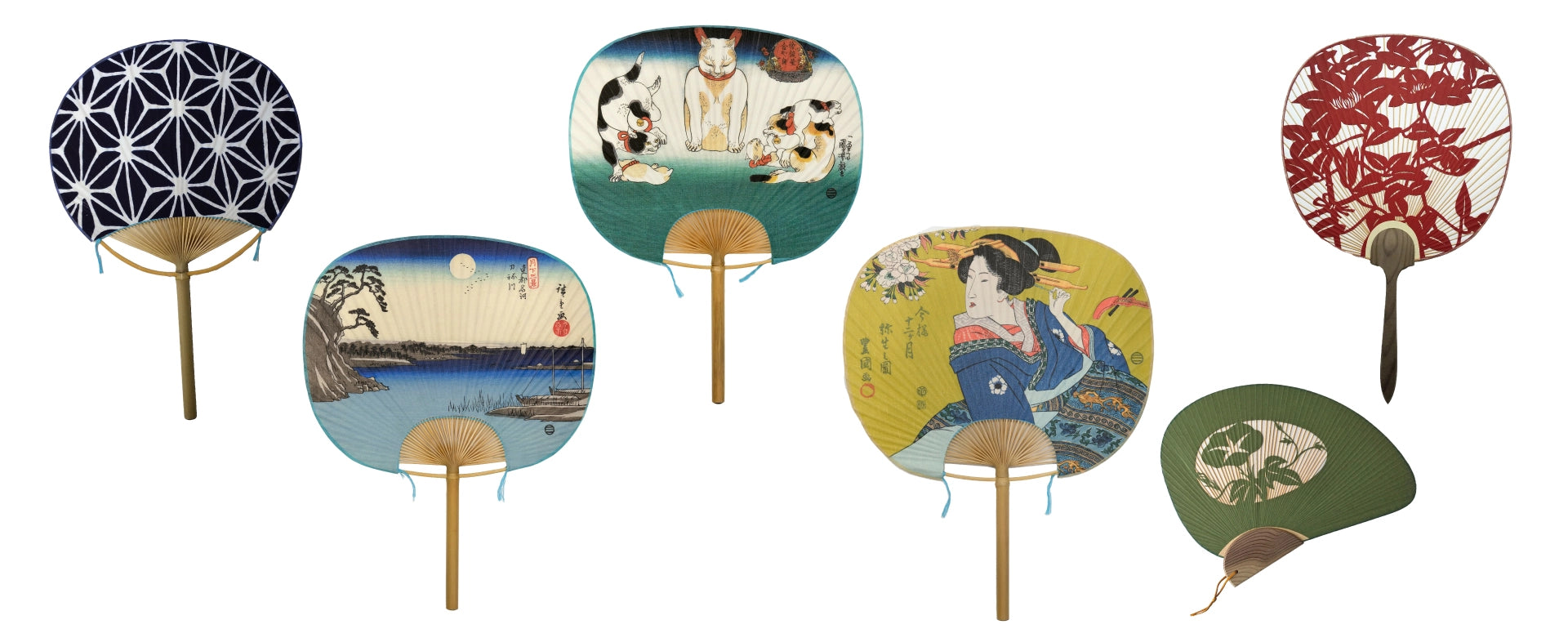Uchiwa fans were introduced to Japan from China and have been used since ancient times, but what is the history of uchiwa fans before they took on their current form and usage? Here we introduce the history of uchiwa fans from ancient times to the present day, and the changes in their usage.
The Primitive Era
The earliest Japanese uchiwa materials are excavated artifacts and wall paintings from the Yayoi Period and Kofun Period. At that time, it is believed that the shades, the origin of uchiwa, were introduced from China (Zhou), and wooden utensils in the shape of uchiwa were found. Based on the murals painted on the tomb mound, it is believed that these tools were used for ceremonial purposes.
Ancient (Asuka, Nara, Heian)
Uchiwa gradually developed over time. In the Nara and Heian periods, decorative uchiwa fans and large uchiwa fans were made for aristocrats and other people of high rank. These uchiwa were used to keep cool, hide one's face, and decorate. On the other hand, the common people began to use uchiwa fans, which were light and easy to use.
Medieval Period (Kamakura, Muromachi, Sengoku)
Toward the end of the Muromachi period (1333-1573), uchiwa began to approach its present form. The structure was changed to one made of bone and paper, which was the basis of the modern uchiwa, and it became even lighter and easier to use. During the Warring States Period, uchiwa were used by warlords as "military bannersround fan(The "Gunbai" (military fan) was created by the warlords. Gunbaiwaround fanThe military commander used it to command the warriors in battle. In modern times, the military standardround fanis used by sumo gyoji as a tool for instructing rikishi to stand and make decisions.
Early Modern Period (Edo)
The Edo period (1603-1868) was a time when uchiwa became widely popular among the general public. Uchiwa came to be used in various aspects of daily life, such as to keep cool and to create a breeze for cooking. Furthermore, the design of uchiwa also developed during the Edo period. With the development of woodblock printing technologyround fanThe development of woodblock printing technology made it possible to mass-produce pictures, and ukiyoe and portraits of actors began to be drawn on uchiwa fans. The appearance of uchiwa fans with ingenious designs made them popular not only as a practical tool, but also as an item for enjoying fashion.
A long-established manufacturer of uchiwa fans, UchiwaIbasenbegan manufacturing them in the middle of the Edo period. At that timeIbasenThe uchiwa fans made from bamboo and washi paper were eventually called "Edoround fanThe product eventually became known as "Edo Uchiwa". Uchiwa fans decorated with Ukiyoe became popular in the late Edo period,IbasenUchiwa became the publisher of popular Ukiyoe artists such as Toyokuni Utagawa I, Kuniyoshi Utagawa, and Hiroshige Utagawa.








